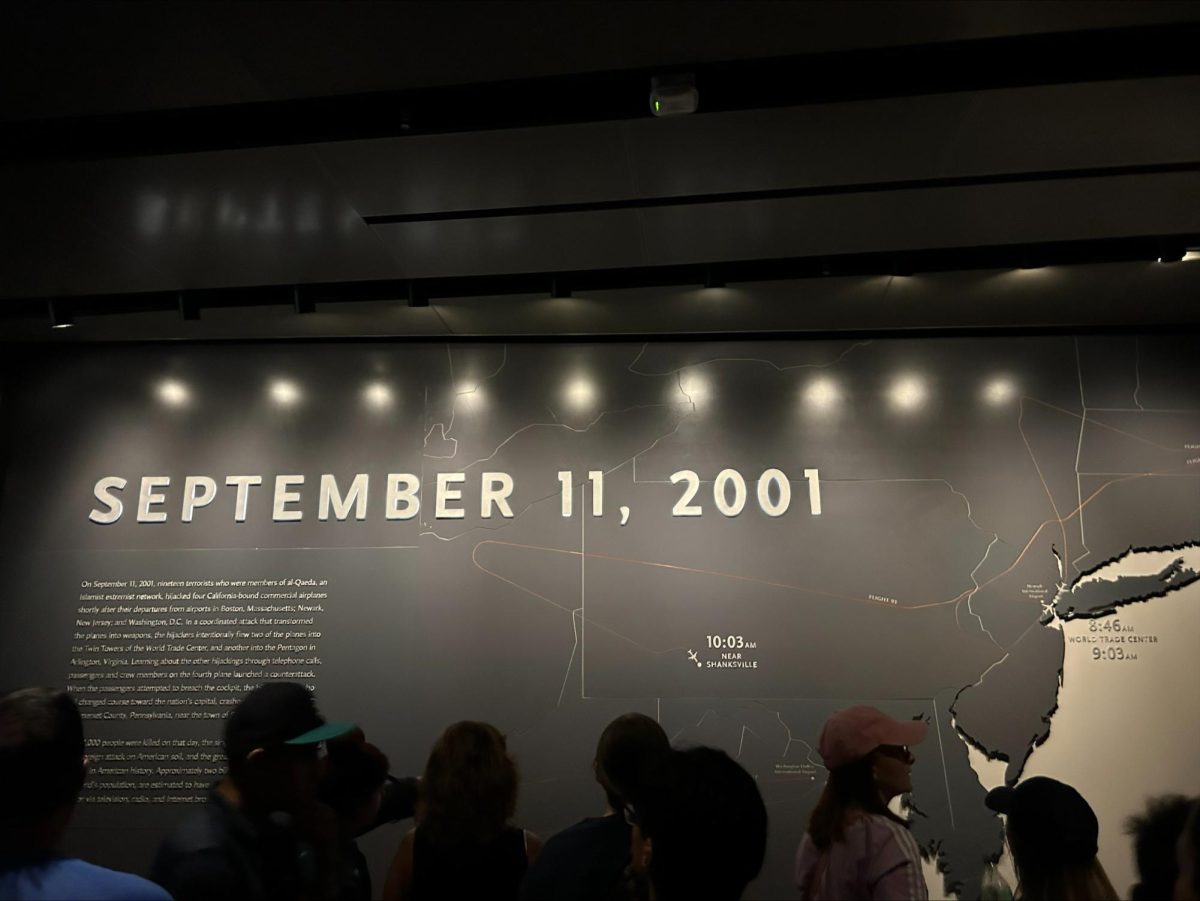On Friday, Sept. 8, I and many other Bucks students went to visit the 9/11 Memorial and Museum in New York City, giving us an experience of how it was on that terrible day just 22 years ago.
The trip, held by the Student Life office, was attended by a group of 50 students made up of those who were the most engaged in the Bucks+ app, and of students who received the Michael G. Fitzpatrick Scholarship.
Many historians say that students who are entering college this year are the first of a new generation of people who were born after 9/11, meaning that education about the tragedy is more important than ever. Stanford University Professor Amy Zegart told “The Atlantic” “It used to be that 9/11 was a trauma shared by everyone. Now it is a day that no one in my classroom but me remembers.”
Chris Seifert, head of the Student Life Office and the trip’s leader, said that Bucks held the event because “It’s important that our students learn about and realize the tragedies that occurred that day, all those who died, and the impacts 9/11 had on everyone in the days and years that followed, all the way up until now. We can only ‘never forget’ if we make sure the story of that awful day continues to be shared with generations that follow.”
Kyle Gocela, a freshman at Bucks, said that he had never gone to the memorial or even New York City at all, but he knew the trip would be sentimental. “I’ve only seen videos of the museum and documentaries, so I was eager to know better about the tragedy onsite.”
I personally had been to the gaping fountains that now stand where the towers once did, but this was my first time in the museum. And I, like most other students on this trip, had no recollection of 9/11, as I was born just five weeks after the attacks.
Before we entered the museum, we were warned about how quiet the museum would be out of respect for the victims. When I went in, I was still shocked at just how quiet it was.
Gocela said the museum hit his emotions hard. “When entering the museum, there is a solemn sound you hear. Watching the sequences of 9/11 felt more depressing than I thought it would be. Watching people try to survive made me respect their motives towards the mantra ‘no man or woman left behind.`”
The museum is located in the footprints of the towers. You first enter where the North Tower was, which is the “memorial” part of the museum. Most notable is the surviving base wall of the north tower. The museum says that the wall is meant to represent the determination and survival of the American people. Next to it is the last beam from one of the towers to be cleaned up in May 2002.
The South Tower in the “museum” area of the memorial featured a full timeline of the events before, during and after 9/11. It first showed how normal of a day Sept. 11 was supposed to be, but it then got grimmer with images of the attacks, audio of calls made by people on the hijacked flights and images of people jumping out of the towers.
It featured numerous artifacts, from things as simple as a clock that was in the tower, a firetruck that still had dust on it, missing people posters of people lost after the attacks and the flags that people displayed after the attacks as a symbol of American strength.
The museum wasn’t just limited to the attack on The World Trade Center, it also featured artifacts and videos from the Pentagon, the airplane that crashed in Shanksville, PA, and information about the bombing that happened at the Twin Towers on Feb. 26, 1993. Also featured was the original model of the World Trade Center from 1962.
This museum was hard for me to take in. From the images of people jumping out the towers to the frantic calls in those planes, that really struck me. For some reason, the part that nearly made me cry was the video of Queen Elizabeth breaking royal protocol by having her marching band play the Star Spangled Banner. It showed me that the world is willing to help a nation that is typically seen as being tough and self-supporting.
But what Gocela found most impactful was the clear blue-sky art in the lobby of the museum that displayed the words “No day shall erase you from the memory of time.” Gocela said that it reminded him of “the blue sky the day before the impact happened. 9/11 changed the world not just for America itself. We learned to help ourselves no matter what we feel about others. No one will forget the day when America became one, supporting each other.
After we left the museum, we were given free time to go around the area and eat. But we tried to stay indoors because the air quality was particularly bad. I couldn’t help but think of this as a reminder of how New Yorkers must have felt when the towers fell with all the dust and smoke in the air.
But then I remembered the dust that they breathed in wasn’t just that. It was the dust of those who had just died in the towers.
That is what struck me the most.
Photos by Christian Grosso


